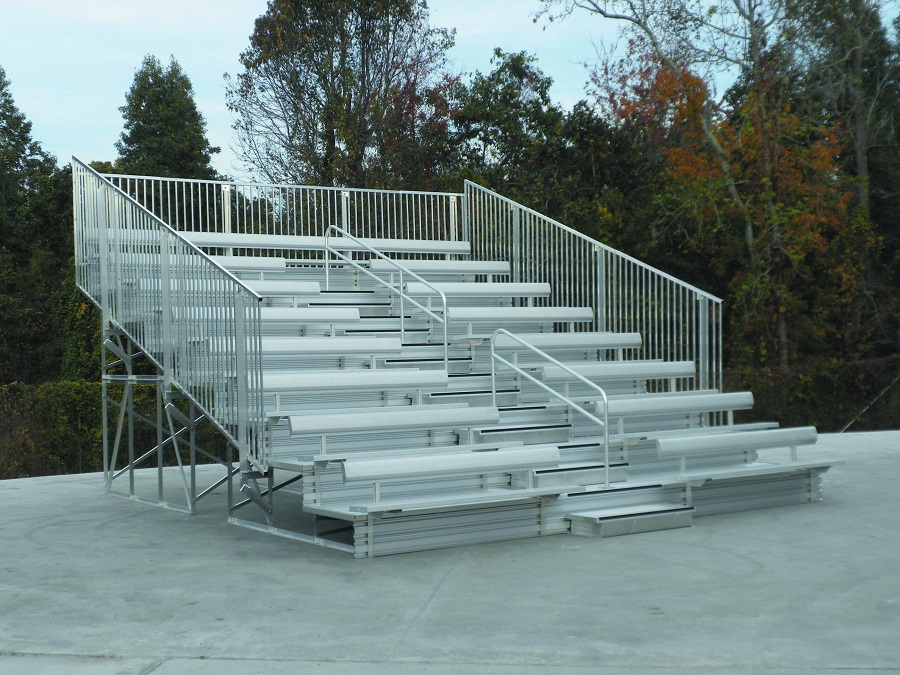A Brief Guide to Bleachers: Choose the Right Type

By simple definition, bleachers is a popular term that designates a rowed set of benches, generally used for seating spectators at a sporting event. They do not come with any cushions, but can usually be fitted with personal or public cushioning for a more comfortable seating.
While choosing the right bleachers for your venue/stadium, you must be well aware of what the different types of bleachers are, so that you can choose the right products to fit everyone at your specific event venue. Here is a short guide to the different types available.
Low-Rise Bleachers
Low-rise bleachers can be easily distinguished from elevated bleachers by observing the following differences:
- The benches are much wider, and they are almost at the same level as the playground surfacing
- Due to their low-rise design, chances are that most won’t have guardrails or stairs/ramps
- Traditionally, at its highest point on the top row, a low-rise bleacher should not be at a height higher than 2.5 feet
- Due to their limited accommodating capabilities, low-rises are more suited for either indoor venues, or small outdoor venues
Elevated Bleachers
If you are decently familiar with outdoor bleachers, the chances are pretty high that what you have seen at most sporting events are elevated bleachers. Just as the name itself suggests, the benches are elevated to be at a higher level than the playground surfacing. In order to provide easy access to the elevated seats, stairs and/or ramps are attached to the bleacher sets. You will find large bleachers with multiple rows generally at larger venues capable of accommodating medium to large sized crowds of spectators.
Telescoping Bleachers
Strictly meant for spectators in an indoor environment, telescoping or retractable bleachers are ideal for indoor events inside schools, gymnasiums, etc. The retractable structures are not self-supported, and thus need to be balanced against the indoor venue’s walls. Due to the telescopic design though, these allow the same space within an indoor environment to be used for more than just one purpose, by increasing or decreasing the play/performance area.
Choice of Material: Aluminum Bleachers
Bleachers are generally made from either aluminum, steel, iron, concrete or from a mix of multiple materials. Due to the durability of aluminum against the elements, and their ability to sit on any type of playground surfacing material, aluminum bleachers are usually ideal for outdoor events. If you are looking for cost-effectiveness, portability, ADA wheelchair seating options, ramps, stairs, and versatile seating arrangements (3 – 15 rows per bleaching), you will find all that and more at GT Grandstands.
Frame-type bleachers with aluminum or steel tubing and frames are by definition, what bleachers are, but some consider I-beam structures as bleachers too. These reinforced steel structures are of course, capable of supporting huge crowds numbering in the thousands, but as one would expect, I-Beam seating arrangements are permanent structures. They are somewhat similar to concrete bleachers (which are not exactly bleachers themselves!) in that sense, but still not as sturdy though.